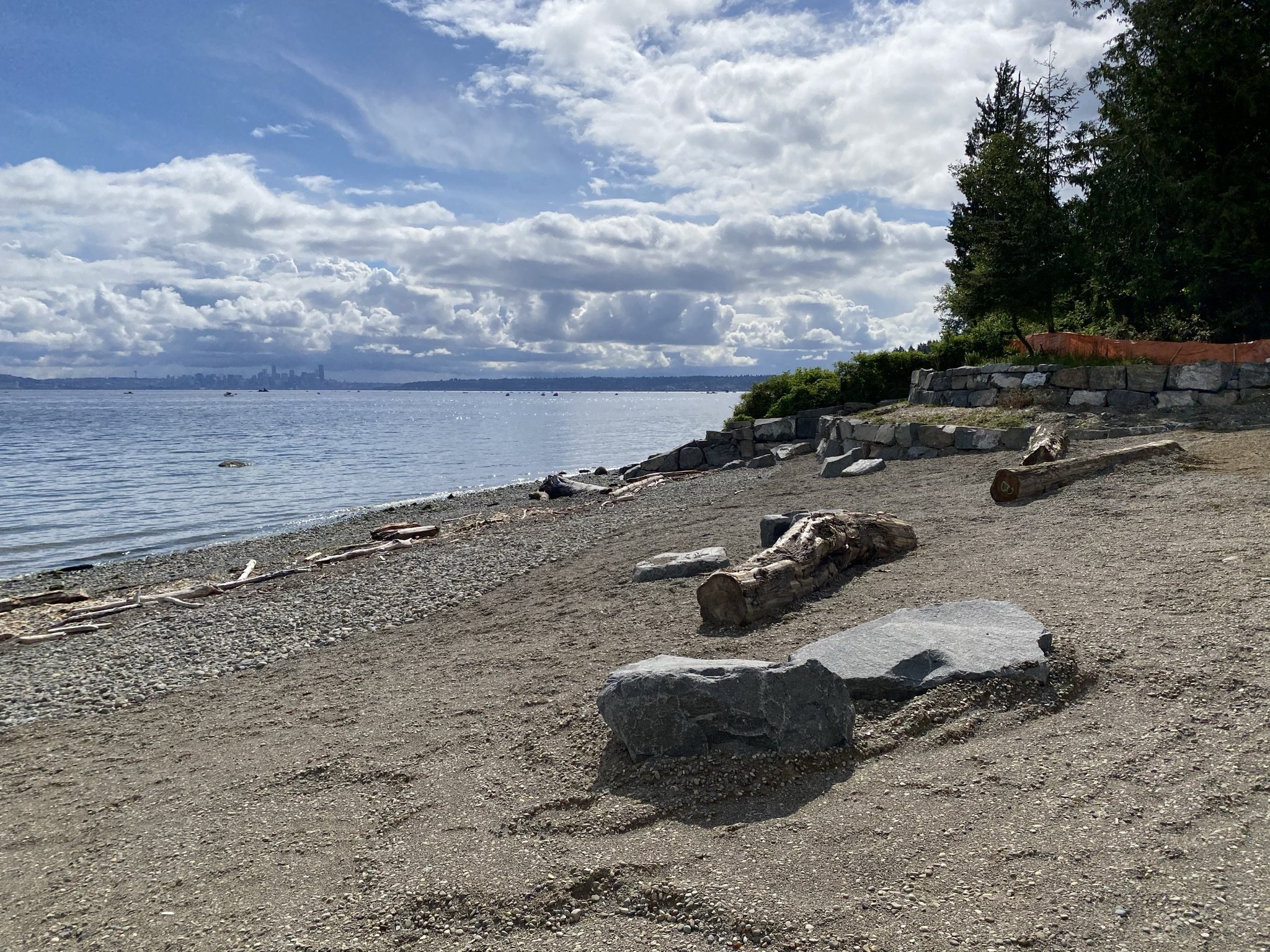On Earth Day: Considering Soil
Soil from site placed adjacent to swale and newly planted.
Minimizing Impacts to a Living System
Soil is a living system and vital for healthy, beautiful landscapes. When we design a new garden or renovate an existing one, maintaining and protecting the existing soil is highly important and is one of the first site resources to consider, both for the health of the plants and for the cost of the project. Importing manufactured soil is expensive and not always necessary if we make protection and re-use of the existing soil a priority.
When we start thinking about construction impacts to existing site soils at a site, we prioritize and organize. Existing soil should be first be protected in place; second, stockpiled, amended, and reused; or lastly, imported when existing is soil is found to be inadequate in quantity or condition. We are currently working on two landscapes where we have preserved existing soil by limiting all construction activities within the areas to remain and stockpiling the topsoil where new construction is taking place.
Cascade Residence Case Study
The Cascade Residence is tucked within a 5-acre second growth wooded lot north of Seattle, WA. Development was carefully sited to minimize impacts to the woodland.
Resources impacted by construction have been reused or stockpiled on site. For example, trees removed to make space for the house and driveway have been chipped and are being used to mulch planting areas, protect tree roots, and surface pathways.
Cascade site-salvaged wood chips and one of the piles of soil stored on site for re-use.
Approximately 500 cubic yards of existing soil was removed from the top six inches in areas to be developed. The soil was tested for fertility and infiltration rates and stored on site, waiting for final placement in new planting beds along the edges of the woods and areas to be seeded and restored. Given that the soil is from woodlands, it is high in organic matter, which makes it less suitable for areas needing faster drainage. New soil has been imported for the lawn and low-lying areas that collect site runoff. The saved soil will be utilized in outer planting beds and at the edges of the forest.
Left, existing soil awaiting new plantings and wood chips spread on an adjacent hillside to protect existing trees and shrubs and suppress weeds. Right, salvaged wood chips protect existing soil and tree fencing limits access to the woodland area being preserved.
Bainbridge Island Case Study
Our second example is a project under construction on Bainbridge Island. This three-plus-acre waterfront property sits up above the Puget Sound about six feet and had a 300-foot long failing bulkhead. The owners removed half of the bulkhead to create a gently sloped beach for access and new shoreline habitat for spawning fish. The over 2,000 cubic yards of site soil removed, which is inadequate for topsoil, is being re-used for sub-base to create multiple landforms and bring areas up to grade around the house prior to placing imported soil for future meadows and planting beds around the new house.
One of two large piles of soil saved on site from the beach excavation to be used to create land forms and sub-base.
Soil pile covered during construction to minimize erosion.
All areas outside of the construction zone have been fenced off and existing soil protected. New trees and shrubs within those protected zones will be individually planted without disturbing the surrounding soil so that existing tree roots are not disturbed.
Bulkhead removal and regrading resulted in a new beach. Coastal Engineering by Coastal Geological Services and construction by Seaborn Pile Driving.
Trees and plants thrive in healthy soils. Preserving and protecting soil, when possible, minimizes resource use and lessens impacts to the environment, resulting in an all-around successful project.
Project Teams
Cascade Residence
Landscape Architecture: Land Morphology
Architecture: Heliotrope Architects
Interiors: Amy Baker Design
Civil Engineering: LPD Engineering
Contractor: Dovetail
Landscape Contractor: Horticultural Elements
Bainbridge Island Residence
Landscape Architecture: Land Morphology
Architecture: Suyama Peterson Deguchi
Civil Engineering: Browne Wheeler Engineers Inc.
Coastal Engineering: Coastal Geological Services
Geotechnical Engineer: Aspect Consulting
Fisheries Biologist: Cedarock Consultants
Contractor: Toth Construction
Landscape Contractor: Horticultural Elements
Waterfront Construction: Seaborn Pile Driving








